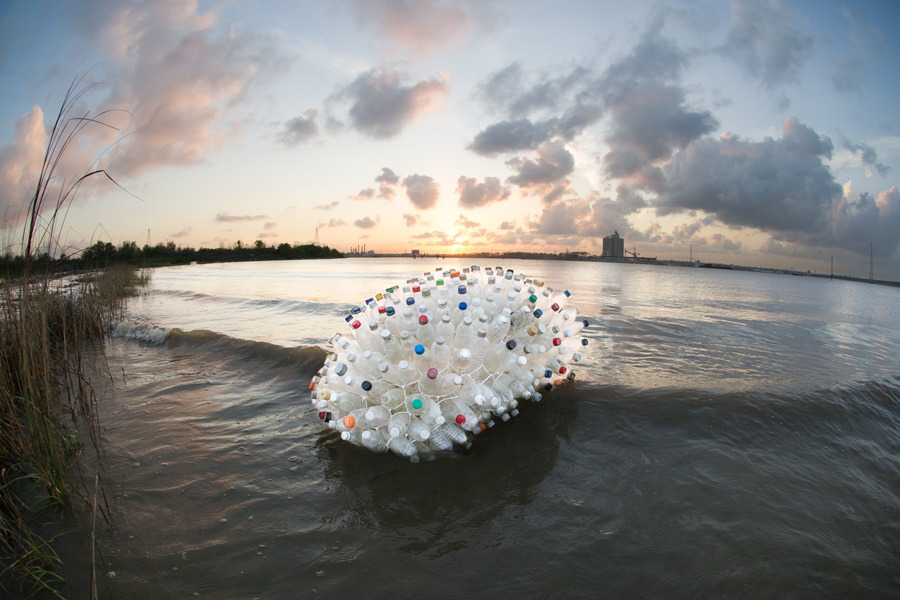 |
| Jeremy at Monomoy National Wildlife Refuge |
Houston photographer, Jeremy Underwood was part of the Aldo & Leonardo artist in residence program at the Monomoy National Wildlife Refuge which took place June 17-July13, 2013. Underwood’s fine art photography embodies our complicated relationship with nature and the contemporary landscape. His photographs focus on the tension between nature and culture, challenging viewers to reflect upon our consumer society, the connection we have with our environment and the pervasion of pollution (Underwood).
Q: Why were you interested in participating at the Monomoy National Wildlife residency?
J.U. I knew the Aldo and Leonardo Wilderness Science and Art Collaboration would be more different than anything I had experienced before. History is no stranger to the collaboration of science and art. Leonardo da Vinci, cited as one of the greatest painters of all time is renowned for his skills as an artist and a scientist. William Henry Jackson’s images of the American West introduced the world to a vast landscape never seen before, laying the groundwork for the preservation of America’s National parks. Ansel Adams served on the board of directors of the Sierra Club advocating the preservation of the land. For me, it is about what can become of art, the message an image can portray when words are not enough.
Q:Why is the intersection of Art and Science so important to you and your work?
J.U. My artwork embodies our complicated relationship with the natural world and the contemporary landscape, challenging viewers to reflect upon our consumer society, the connection we have with our environment and the pervasion of pollution. I was curious how a scientific influence would affect my work.
Q:What are some of your first reactions to the Monomoy National Wildlife Refuge?
J.U. As I began my journey to Monomoy, a conflict in ideology ran through my thoughts, scientific utility versus aesthetic sensibility. We were a group of artists working with scientists. In one sense, artists are at odds with science, relying more on intuition than scientific theory. On the other hand, both artist and scientist try to posit change working for the same outcome. I wondered, what was to come of such a residency experiment?
Q:What do you believe to be a highlight to your time spent at Monomoy?
J.U. Upon arriving at Monomoy, it was difficult to get passed the chaos. Fifteen thousand nesting birds in a small area was mind blowing. But once I settled into the environment, quiet heartfelt moments began to reveal themselves: the gentleness of a mother bird with her chick, the playfulness of the newborn birds, the devotion of the parents to their young. To be able to witness these events…that is what life is all about.
Q:Did you experience any change in your perception during your stay at Monomoy?
J.U. I’ve seen the level of commitment needed by the staff to continue to protect this wildlife area. And too, I’ve seen the frustration of the public not allowed to recreate on the nature preserve. In the end, my experience has left me with more questions than answers about how we negotiate the natural places left in our world. Wilderness stewardship is a complicated issue. I guess it is to be expected that at any confluence, there is sure to be turbulence. At the edge of nature and culture, this is especially true. But I can say, that I’ve left with the idea that stewardship, change, and protection is not the calling of one career path. Rather, it takes many to sew the seeds of change. I’m hoping I can be a part of that circle.
Q:As an artist do you feel like you influenced the scientist that you worked with?
J.U. I remember having a conversation with one of the scientists about what they were doing at Monomoy. My curiosity and layman’s description of the project put a smile on her face. She told me her daily job was all about the routine, the data and science and it was good to be reminded about the passion.
Q:Did you experience any absurd situations at the Monomoy Refuge?
J.U. Upon arrival, it was clear that much effort was put into the protection of Monomoy’s tern colony. So that is where I put my energy, documenting productivity. In ideology, the act seemed straightforward, even a bit romantic. Protect and document Monomoy’s colony of birds. In reality, philosophy and practice can be a considerable divide. Approximately fifteen thousand terns nest in a small range on Monomoy. Despite our good intentions to protect them, the birds only saw us as predators to their young. Every moment, and I do mean every single moment we were in the open, we were barraged by birds, attacked and defecated on, sunrise to sunset. It made Hitchcock’s film, The Birds, look like child’s play. I’ve been told that in some cultures people believe that is very good luck to be hit by bird poop. The staff at Monomoy must be some of the luckiest people on earth. Every day we came back to camp covered in good luck.
Q:What were some of the beneficial outcomes of your experience?
J.U. Monomoy has given me the insight of what it takes for preservation and protection first hand. It’s a hard job, it’s a dirty job, it’s a complicated job. This experience has furthered my understanding of the complexity of our relationship with the environment.
 |
| Human Debris- Jeremy Underwood's trash scuplture in a Huston waterway. http://jeremyunderwood.com/trash-sculpture-public-art/ |

loved this interview- I could relate to a lot of what you said being here at CANM. Loved the sculptures and just looked at the others on your website. So cool!
ReplyDelete